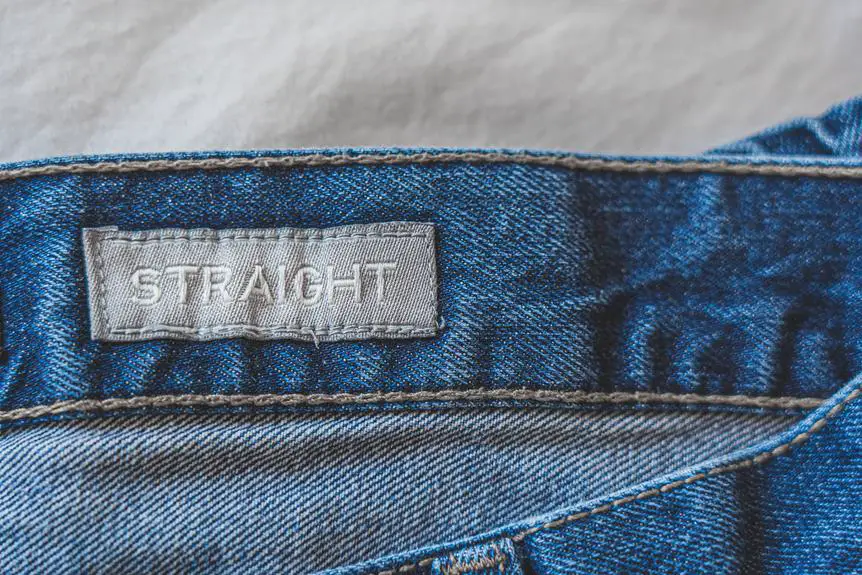If you're looking to master the art of sewing, understanding bias-cut fabric is like unlocking a new level of expertise. This sewing tip delves into the intricacies of working with fabric cut on the bias, revealing the advantages, challenges, and techniques that come with it.
From choosing the right fabric to troubleshooting common issues, this guide will equip you with the knowledge needed to handle bias-cut fabric with confidence.
Whether you're a seasoned seamstress or a beginner eager to elevate your skills, mastering the nuances of bias-cut fabric opens up a world of possibilities for creating garments with fluidity and elegance.
Key Takeaways
- Bias-cut fabric offers natural stretch and fluidity for comfortable movement.
- Choosing lightweight and drapey fabrics is important for achieving a graceful and flattering drape.
- Careful handling and cutting techniques are necessary to prevent distortion and stretching.
- Understanding proper care and maintenance techniques is crucial for preserving the shape and integrity of bias-cut fabric garments.
Understanding Bias-Cut Fabric
You frequently use bias-cut fabric to create garments that drape beautifully and accentuate the body's natural curves. The unique quality of bias-cut fabric lies in its diagonal orientation, allowing the fabric to gracefully contour the body. When draped, bias-cut fabric flows smoothly, enhancing the natural drape of the garment and ensuring a flattering fit. This technique is particularly popular in creating evening gowns, lingerie, and flowing skirts due to the elegant and fluid silhouette it creates.
Furthermore, pattern matching is crucial when working with bias-cut fabric. The diagonal orientation of the fabric makes it more challenging to match patterns accurately. It requires meticulous attention to detail and careful alignment to ensure that the patterns seamlessly flow from one pattern piece to another. This precision in pattern matching is essential to maintain the continuity of design and to achieve a professional, polished look in the finished garment.
Understanding the behavior of bias-cut fabric is essential for mastering the art of garment construction. By harnessing its unique drape and mastering pattern matching, you can elevate your garment-making skills and create stunning, form-flattering pieces.
Advantages of Bias-Cut Fabric
When working with bias-cut fabric, you can achieve a natural stretch and fluidity that enhances the garment's overall comfort and movement. This is one of the primary advantages of using bias-cut fabric in garment construction. The fabric's ability to drape and conform to the body's natural curves is unparalleled. Draping techniques, such as creating soft, flowing lines and elegant silhouettes, are particularly well-suited to bias-cut fabric. The fabric's inherent flexibility allows for graceful and flattering draping, resulting in garments that are both visually appealing and comfortable to wear.
Another advantage of bias-cut fabric is its potential for pattern matching. When cut on the bias, fabric patterns can be manipulated in interesting ways, creating stunning visual effects on the finished garment. This opens up a world of design possibilities, allowing for unique and creative pattern placements that wouldn't be achievable with fabric cut on the straight grain.
Choosing the Right Fabric
Consider selecting a fabric that will drape well and stretch naturally when cut on the bias. Fabric selection is crucial when it comes to bias-cut sewing projects. Look for lightweight, drapey fabrics such as silk charmeuse, crepe de chine, or lightweight jerseys. These fabrics have the necessary fluidity to create the beautiful, flowing lines that bias-cut garments are known for. Avoid stiff or heavy fabrics that won't fall gracefully on the body when cut on the bias. Additionally, fabrics with a natural stretch, like bias-cut silk satin or stretch velvet, can enhance the comfort and fit of bias-cut garments.
When choosing the right fabric, it's essential to consider the print and pattern. Striped, plaid, or directional prints may be challenging to match at the seams due to the diagonal nature of bias-cut fabric. Instead, opt for solid colors or non-directional prints to avoid pattern matching issues.
Furthermore, consider the fabric's fiber content. Natural fibers like silk, rayon, or lightweight wool are excellent choices for bias-cut projects as they offer beautiful drape and movement. Synthetic fibers can also be suitable if they mimic the drape of natural fibers. By carefully considering these factors, you can ensure that your fabric choice complements the unique characteristics of bias-cut designs.
Cutting and Handling Tips
To achieve the best results when working with bias-cut fabric, it is important to handle the fabric with care and precision during the cutting process. Fabric manipulation and draping techniques are crucial when working with bias-cut fabric, as its unique properties require special attention to detail. Here are some cutting and handling tips to help you work with bias-cut fabric effectively:
| Cutting and Handling Tips for Bias-Cut Fabric | ||
|---|---|---|
| 1. Use a Single Layer | When cutting bias-cut fabric, it is best to work with a single layer of fabric to ensure accuracy and prevent stretching or distortion. | |
| 2. Handle with Care | Due to the bias-cut fabric's tendency to stretch, handle it gently to avoid distorting the grain. Use sharp, high-quality scissors to ensure clean, precise cuts. | |
| 3. Allow for Resting Time | After cutting bias-cut fabric, allow it to rest for at least 24 hours before hemming, as it may stretch or settle. This will help you achieve a more accurate finished garment. |
Sewing Techniques for Bias-Cut Fabric
For efficient handling of bias-cut fabric, carefully align the edges before sewing, ensuring that the fabric lies flat and secure with pins, and frequently check the grain to prevent distortion.
When sewing bias-cut fabric, it's crucial to use specific techniques to achieve the best results. Here are some sewing techniques for bias-cut fabric:
- Pattern matching: Take the time to carefully match the patterns on bias-cut fabric. This attention to detail will elevate the overall look of the garment and showcase your craftsmanship.
- Pin and sew: Secure the bias-cut fabric with pins before sewing. This helps to prevent shifting and ensures that the fabric stays in place during the sewing process.
- Draping techniques: Utilize draping techniques to take advantage of the drape and flow of bias-cut fabric. Experiment with different draping styles to create unique and elegant designs.
Troubleshooting Common Issues
If you encounter issues when working with bias-cut fabric, carefully assess the tension on your sewing machine. Incorrect tension can lead to seam puckering, especially when working with bias-cut fabric.
To troubleshoot tension issues, start by rethreading both the upper and lower threads. Ensure that the machine is threaded correctly and that the threads are securely in the tension disks and the bobbin case. If the tension is still off, adjust the tension dial in small increments, testing the stitches on a scrap piece of bias-cut fabric after each adjustment.
Another common cause of seam puckering is using the wrong needle. Make sure you're using a needle appropriate for the fabric weight and type. A needle that's too dull or too small can cause the fabric to pucker as it's being sewn.
Additionally, check the presser foot pressure to ensure it's set correctly for the fabric. By paying close attention to these details and making necessary adjustments, you can troubleshoot and resolve tension-related issues when sewing bias-cut fabric.
Styling and Design Considerations
Consideration of fabric drape is crucial in bias-cut garment design, as it significantly impacts the overall silhouette and movement of the clothing. When working with bias-cut fabric, understanding styling techniques and fabric drape is essential for achieving the desired look and fit of the garment.
Here are some key styling and design considerations to keep in mind:
- Flow and Movement: The fluidity and graceful movement of bias-cut garments can evoke a sense of elegance and sophistication, making them ideal for special occasions or formal attire.
- Silhouette Enhancement: The bias cut can accentuate the natural curves of the body, creating a flattering and feminine silhouette that enhances the wearer's figure.
- Versatile Draping: The unique properties of bias-cut fabric allow for versatile draping and shaping, enabling the creation of intricate designs and dynamic silhouettes that captivate attention.
Understanding how fabric drape influences the overall design and styling of bias-cut garments empowers you to leverage this technique to create stunning, fashion-forward pieces with a timeless appeal.
Care and Maintenance Tips
To keep your bias-cut fabric in pristine condition, it's essential to understand proper fabric washing techniques, effective stain removal methods, and recommended storage practices.
By following these care and maintenance tips, you can ensure that your bias-cut garments maintain their shape, drape, and integrity for years to come.
Let's explore each of these points in detail to help you preserve the quality and longevity of your bias-cut fabric creations.
Fabric Washing Techniques
When washing bias-cut fabric, always handle it gently to prevent stretching or distortion. Start by pre-treating the fabric to control shrinkage. Use a gentle detergent and cold water to wash, avoiding harsh chemicals and high temperatures.
When rinsing, support the fabric to prevent excessive pulling. After washing, gently press out excess water without wringing or twisting.
When drying, lay the fabric flat on a clean, dry towel to absorb moisture, then air dry it on a flat surface to prevent distortion. Avoid hanging bias-cut fabric when wet, as it can stretch and lose its shape.
Stain Removal Methods
For effective stain removal on bias-cut fabric, begin by spot-testing in an inconspicuous area to ensure the treatment doesn't cause further damage. Once confirmed, carefully blot the stained area with a clean, white cloth to remove any excess substance. Avoid rubbing, as this can set the stain further into the fabric.
Depending on the type of stain, consider using specialized stain removers designed for delicate fabrics, following the manufacturer's instructions. For organic stains, such as food or blood, apply a mixture of cold water and enzyme-based detergent to break down the proteins.
Always air-dry bias-cut fabric to prevent heat from setting the stain. Remember, prompt attention to stains is crucial for effective fabric care and textile preservation.
Storage Recommendations
After addressing any stains, ensure proper storage of bias-cut fabric by folding it carefully and placing it in a breathable, acid-free storage container. When it comes to fabric folding, remember to avoid creasing or pressing the folds too tightly, as this can lead to permanent wrinkles. Additionally, place a layer of acid-free tissue paper between each fold to provide extra protection against creasing and potential discoloration.
Using air-tight containers will help protect the fabric from moisture, dust, and pests, preserving its quality for future use. Remember to label the containers to easily identify the fabric inside, and store them in a cool, dry place away from direct sunlight and extreme temperatures.
Proper storage will maintain the integrity of the bias-cut fabric, ensuring it stays in excellent condition for your future sewing projects.
Frequently Asked Questions
Can Bias-Cut Fabric Be Used for Making Structured Garments or Is It Best for Draping Styles?
Bias-cut fabric can be used for making structured garments, but it's best for draping styles. It's important to choose the right fabric types to prevent stretching. Incorporating bias-cut fabric in quilting projects allows for creative designs and garment incorporation.
How Do You Prevent Bias-Cut Fabric From Stretching Out of Shape While Sewing?
To prevent bias-cut fabric from stretching out of shape while sewing, use stay tape or interfacing along the seams, handle the fabric gently to avoid distorting it, and consider using a walking foot or a rotary cutter for precise fabric manipulation.
Are There Specific Types of Fabric That Are Better Suited for Bias-Cutting?
When selecting fabric for bias-cutting, consider types like silk, satin, and lightweight fabrics that drape well. The benefits of bias cutting include fluidity and drape, but it requires careful handling to prevent stretching. Mastering sewing techniques for bias-cutting is essential.
Can Bias-Cut Fabric Be Used for Quilting or Other Non-Garment Sewing Projects?
Yes, bias-cut fabric can be used for quilting or other non-garment sewing projects. The bias cut in home decor adds fluidity and drape, while in accessories, it allows for stretch and flexibility, making it a versatile choice.
What Are Some Creative Ways to Incorporate Bias-Cut Fabric Into Garment Designs?
Incorporate bias-cut fabric in eveningwear by utilizing its fluid drape for elegant gowns and sleek silhouettes. For lingerie design, experiment with bias-cut silk for sensuous, form-fitting pieces that accentuate the body's natural curves.
- Smart Fabrics: Integrating Wearable Technology Into Clothing - July 23, 2024
- The Future of Fashion: 3D Printing in Textile Design - July 23, 2024
- How to Master Laser Cutting and Engraving on Fabrics - July 23, 2024








